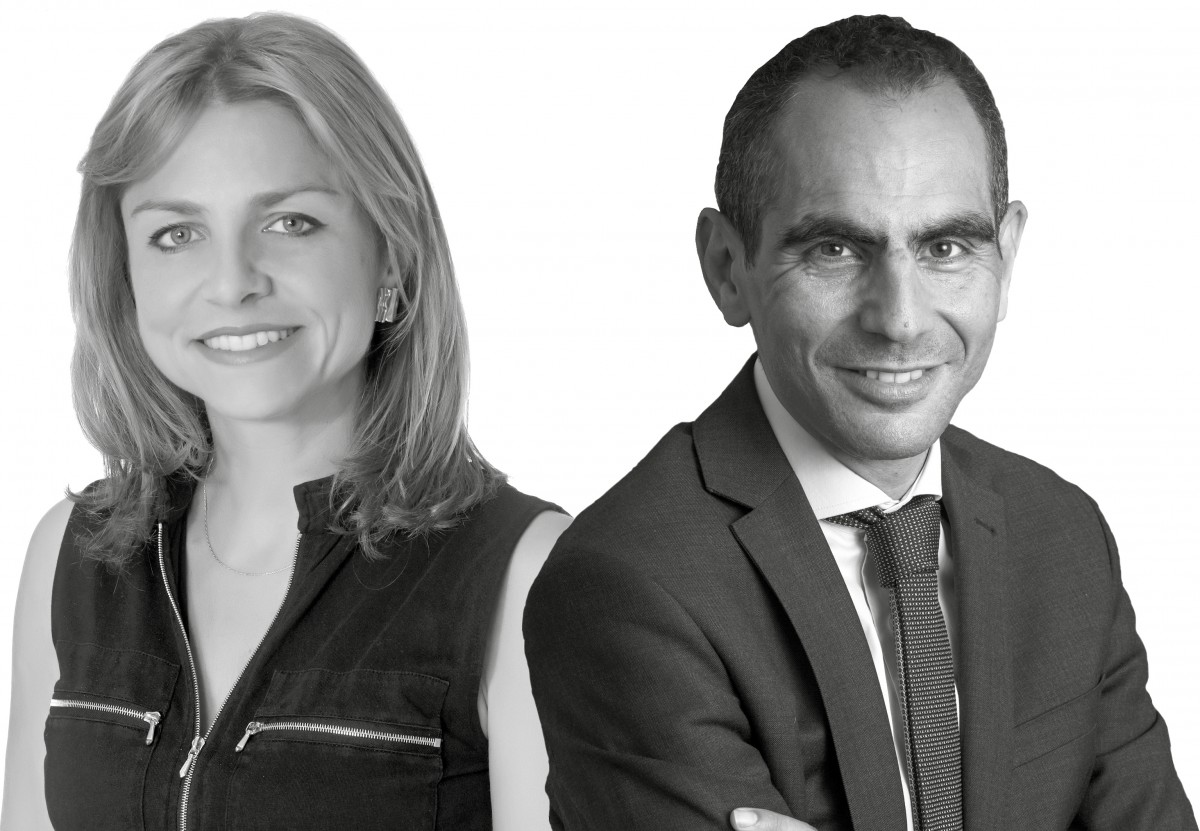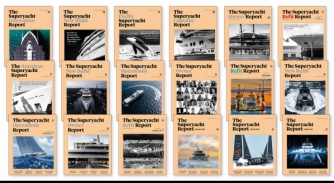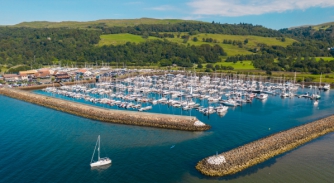Optimising yacht ownership through lending
Adina Bates, head of yacht finance, and Nicolas Feit, CEO of Société Générale Private Banking Monaco, on how well-structured lending can be part of a pragmatic ownership strategy…

Adina Bates and Nicolas Feit
The global fleet of superyachts in operation has consistently expanded. There are encouraging signs for sustainable development and evolution of our industry, fuelled by the exponentially growing number of UHNWIs in the world. The yachting world is a wonderful laboratory for change, innovation and promotion of craftmanship.
With about 3,700 owners for the 5,500-plus yachts in operation, many of the owners have more than one vessel and they are often repeat owners. The market is therefore made up, to a lesser part, of new buyers.
But that said, we can question why many UHNWIs with the capacity to build or buy yachts are simply not tempted by the allure of adventure on the seas. Environmental/climate-change concerns, perceived image or reputation linked to owning such assets in some parts of the world, little knowledge of the industry and of the innovation effort that lies behind it are some of the explanations.
A more pragmatic reason that is often repeated is that a yacht is not seen as a traditional investment. Buyers are either passionate about the sea, the maritime ecosystem and accept the associated cost thereof, or it needs to be demonstrated to them that there are possibilities to efficiently structure their yachting experience. With a low use rate by the owner or their family, and high maintenance costs, astute entrepreneurs are keen to explore all possibilities to lessen the costs, including the cost of depreciation. New ownership models are being explored to address some of the reasons for this hesitation, such as fractional ownership among others.
Another possibility to optimise the cost is to structure the funding of the acquisition in such a way that part of the equity, initially budgeted towards the transaction, is invested in value-creating projects instead. Borrowing is used as a cash-flow-optimisation tool. Yacht loans are generally guaranteed part by a marine mortgage and part by financial assets. The latter are invested according to a strategy agreed between the client and the bank, according to the risk appetite of the client and general market conditions.
There is certainly a premium as yacht finance is capital-consuming for banks due to strict banking regulations. Yet the cost remains very reasonable when compared to the cost of financing less conventional opportunities.
Under this structure, the bank can finance up to 100 per cent of the fair market value of a yacht, with a major portion of the loan secured against the asset itself. Repayment is scheduled quarterly or annually in arrears and includes a balloon payment at the loan term. The mechanism allows the borrower to adjust the timing of repayments to match their future cash events. The overall financial position of the client remains more liquid over time and part of the cost of the loan is covered by the return on the invested portfolio. As a result, more than half of the market value of the yacht can be reallocated by the client to their own projects, which usually generate returns in excess of the marginal loan cost.
Another example of using the same mechanism of leverage against yachts is equity release for owners who have not financed when taking ownership. It may be that circumstances have been such that they have an investment project that is not traditionally financed through standard lending, such as emerging markets investments or purchasing property in locations that are not eligible for finance. Often borrowers compare the cost of lending against yachts to the cost of lending for real estate in prime locations.
There is certainly a premium as yacht finance is capital-consuming for banks due to strict banking regulations. Yet the cost remains very reasonable when compared to the cost of financing less conventional opportunities. These are traditionally funded through private lending or private equity funds, where the expected return from the funding partner is significantly higher. In such conditions, clients find it more interesting to leverage a private asset such as the yacht instead, in order to fund these transactions.
Now, looking at the investment component, a frequent element of reluctance for clients regarding the structures typically offered by private banks is not obtaining dry financing, where the bank only takes the mortgage on the vessel as guarantee and limits their loan exposure. In this scenario, the bank structures the yacht credit part against a classic maritime mortgage, and part as a ‘back-to-back’ loan, secured by deposits or a portfolio invested with the bank.
For clients who are not risk averse, the investment team can also structure investment portfolios that can ‘beat’ the cost of credit, but that depends very much on client sensitivity.
The mortgage part is mainly dependent according to the value of the vessel and constitutes the major part of the credit. Very often, buyers will consider the second component as a constraint imposed by the bank, whereas naturally they would prefer not to finance this portion and bring the equity in the transaction as down-payment.
While there may be other commercial factors for structuring the lending in this manner, it remains a point for review and discussion during the process. That said, even from the client’s perspective, increasing the down-payment to the seller instead of increasing the financing against the invested portfolio is not necessarily a good calculation. Any cash contribution will undergo a mechanical depreciation with the decrease in value of the yacht over time, between 3 and 5 per cent on average, depending on the age and brand of the asset. Whereas the invested portfolio can, especially in the current interest rate context, pay a fixed return over periods of up to five years.
These returns, on fairly secure products, partially offset the cost of credit at set-up. The cost differential, which is around 1.5 per cent to 2 per cent today, can be compensated over time in a context where the indexes such as the three-month or six-month Euribor that are used to calculate the cost of interest are decreasing. For clients who are not risk averse, the investment team can also structure investment portfolios that can ‘beat’ the cost of credit, but that depends very much on client sensitivity. The bank is very careful to correctly qualify and inform the clients of the risks of the various investment and lending strategies so they feel secure in respect to their position.
At Société Générale Private Banking Monaco, our aim is to develop a wider, individual wealth management relationship with the client. The purpose is to build trust and preserve wealth through a long-term reciprocal relationship. The loan mechanism, the investments we agree upon with our clients and the overall strategy reflect this objective.
Our aim as an individual-focused lender is to secure the client’s position during the whole life of the relationship. We have a responsibility to build a solution that is not only very competitive at set-up, but one that is sustainable over time. The solutions that we can propose are therefore tailored to address both of these requirements.
This article first appeared in The Superyacht Report – Owner Focus. With our open-source policy, it is available to all until 21 November by following this link, so read and download the latest issue and any of our previous issues in our library.
NEW: Sign up for SuperyachtNewsweek!
Get the latest weekly news, in-depth reports, intelligence, and strategic insights, delivered directly from The Superyacht Group's editors and market analysts.
Stay at the forefront of the superyacht industry with SuperyachtNewsweek
Click here to become part of The Superyacht Group community, and join us in our mission to make this industry accessible to all, and prosperous for the long-term. We are offering access to the superyacht industry’s most comprehensive and longstanding archive of business-critical information, as well as a comprehensive, real-time superyacht fleet database, for just £10 per month, because we are One Industry with One Mission. Sign up here.
Related news
.jpg)
Yacht owners push for nuclear power
More owners are pushing for nuclear power on board, some by the end of the decade, according to a recent Lloyd’s Register report
Crew

Open Source – The Superyacht Report
Chairman Martin H. Redmayne announces open access for all to The Superyacht Group’s archive of “Reports Worth Reading”
Business

British maritime industry surges in growth
The maritime sector in the UK is flourishing, with double-digit growth and increased contributions to the economy, according to a British Marine report
Business

What is the future of ownership?
Martin H. Redmayne quantifies the potential for new ownership based on the number of individuals who could afford to enter the market
Owner
Related news
Yacht owners push for nuclear power
1 year ago
Open Source – The Superyacht Report
1 year ago
British maritime industry surges in growth
2 years ago
What is the future of ownership?
2 years ago
NEW: Sign up for
SuperyachtNewsweek!
Get the latest weekly news, in-depth reports, intelligence, and strategic insights, delivered directly from The Superyacht Group's editors and market analysts.
Stay at the forefront of the superyacht industry with SuperyachtNewsweek



